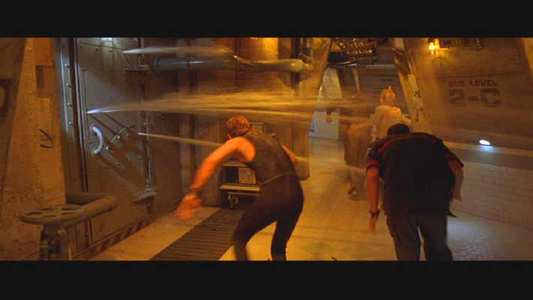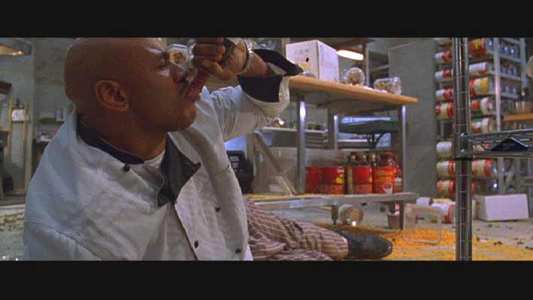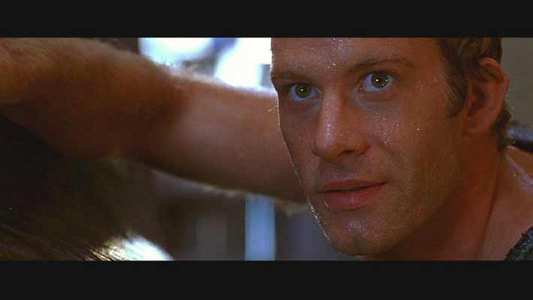Review of Deep Blue Sea
Introduction
Long ago, when I first purchased my DVD player, I took advantage of an offer from Warner that would give three movies free to enjoy with my new purchase. After one quick view each, it has taken this long for me to watch one again. Last night I put my feet up and settled down to watch Deep Blue Sea.
The best-known shark movie has to be Jaws. Steven Spielberg created the ultimate in suspense when he dared us to venture into the water all those years ago. A lot of this was accomplished by implication and intimation, with the shark hardly ever seen. This was due to the amazing technical difficulties involved with bringing a shark to life on the silver screen. Twenty-five years on, with animatronics and CGI technology so advanced that it is often difficult to distinguish the real and unreal on screen, the opportunity arose to make a new kind of shark movie, where the sharks can be seen in all their terrifying glory. Renny Harlin created a movie to appeal to the jaded nineties audience, with the thrill and action quotient bumped up to a new level.
The Aquatica labs as funded by billionaire Russell Franklin is a complex dedicated to Alzheimer`s research located in the middle of the ocean. Dr Susan McAlester and her team are dedicated to finding a cure to the debilitating disease by researching sharks. She believes that a substance harvested from sharks` brains can stimulate the repair of human brain tissue. To maximise this substance, she has used illicit genetic engineering to increase the brain size of her experimental sharks. This has the side effect of rendering these sharks amazingly intelligent. When Russell Franklin decides to visit the labs to see whether to keep funding the labs, Dr McAlester decides to give a demonstration of the harvesting process. This is an ill-advised decision, as the complex has a skeleton crew that is unable to react when a researcher is injured by a shark. The rescue helicopter crashes into the complex slowly flooding the inside and the hungry sharks escape into the corridors.

Video
Deep Blue Sea is presented in 2.35:1 anamorphic aspect ratio. The picture is clear, sharp and well defined. The film is as pristine as you would expect from such a recent movie and it`s pretty much a flawless transfer. This being an event movie, it`s full of spectacular imagery and exciting scenes. The effects are top notch, with the sharks well accomplished and striking with one or two minor exceptions. It`s a far cry from the difficult days of Jaws, where much of the movie was made sans shark. Similarly the action sequences are well choreographed and visually stunning, with the massive Aqualab set filling the screen. In a useful spin-off from the Titanic movie, the massive tanks used to film that epic also allowed for the impressive visuals in Deep Blue Sea.

Audio
It`s an impressive use of surround sound from the instant the film starts. The DD 5.1 soundtrack is put to good use as you are thrust into the middle of the action and excitement. This is clearly an event movie as the explosions and rumbles are given priority over measly things like dialogue. Prepare to have the surveyors in to check the foundations after you watch this film. The music by Trevor Rabin suits the film perfectly with his score complementing the pace and tempo of the film. LL Cool J provides a rather cheesy tune to cover the end credits, which never really troubled the UK charts. Rap with a capital C.

Features
Deep Blue Sea gets a nice little package of extras that complement the film well.
Top of the list is the Commentary with Renny Harlin and Samuel L. Jackson presented in DD 2.0 Surround. Their inputs were recorded separately, but they complement each other well, with Harlin providing the technical side and Jackson giving an entertaining look behind the scenes. I loved Samuel L. Jackson`s comments, which were often priceless. In fact, I wouldn`t mind Samuel L. Jackson commenting on films he has nothing to do with, he is that good.
When Sharks Attack is a 15-minute documentary that looks at the making of the film. It`s your usual PR guff, with interviews with the cast and crew.
The Sharks of the Deep Blue Sea is a 9-minute look at how the shark effects were accomplished. Again this is entertaining enough, if a little light, but there is a little repetition from the previous documentary.
There are 8 minutes of deleted scenes that you can watch with or without the director`s comments. There are 5 scenes in total.
There is a Theatrical Trailer and a Stills Gallery containing some 32 pics.
Finally there are some weblinks, but as I wasn`t inclined to check them, I don`t know whether the site is still active.
Like the main feature, the extras are all subtitled in English, Arabic, Romanian and Bulgarian. This is excluding the commentaries of course.

Conclusion
Deep Blue Sea is never going to tax any brain cells. It follows the standard event movie formula of a well-oiled thrill ride. When you sit down to watch this, you know exactly what you are going to get. The film pays lip service to a script, with the perils of genetic engineering leading to another Frankenstein`s monster unleashed on unsuspecting humans. Think Jurassic Park crossed with Alien underwater and you get the idea. We`re all familiar with the necessary clichés by now, indeed were the movie to take a narrative left turn, the average audience would be left a little confused. The special effects while spectacular to look at, hardly make the film stand out when compared to any other similar movies. You have to look at the characters for any spark of individuality that would make an action flick stand out.
Unfortunately, for the most part the characters are the hackneyed crew that usually inhabit these flicks. Saffron Burrows is the stereotypical Dr Frankenstein of the shark world. Her Dr McAlester is cold and driven and resorts to all the monomaniacal clichés associated with scientists dead set on saving the world, whether it needs it or not. Thomas Jane is the golden haired, blue eyed, lantern jawed hero type who likes swimming with sharks. He`s even got the manly hero type name, Carter Blake. The rest of the cast similarly fill identikit roles as the ambulatory shark fodder. Jacqueline McKenzie is the whimpering hysterical type who you know will get munched early on, Michael Rapaport as Tom Scoggins has a smidgen of personality, just enough to make a mark on this film. However there are two redeeming features to this gathering of mediocrity. Samuel L. Jackson as tycoon Russell Franklin goes in to blow the whistle on the DNA tampering, and when the balloon drops, he takes charge of the group to escape the sinking laboratory. His role is the ultimate cliché, with stirring motivational speeches and a heroic background that is all cleverly subverted when… You`ll have to find out yourself. But for me the star of this film has to be LL Cool J as the chef, Preacher. Despite his questionable musical contribution to the soundtrack, his characterisation of the wisecracking cook is inspired. He carries just the right note of irreverence and seriousness to make him stand out in this film, and his performance alone makes it mildly worth watching. Let me put it another way, you know a film is in trouble when the most chemistry between characters is that between LL Cool J and the parrot.
Renny Harlin has created a perfectly watchable popcorn flick. The action is always excellent with the expected atmospheric slow-mo shots interspersed with some amazing and innovative visuals. Sadly the script and the characters aren`t good enough to push this film anywhere beyond the mundane. And why is it that the shark changes size depending on where it is? Great picture, sound and a nice package of extras are let down only by the film.
Your Opinions and Comments
Be the first to post a comment!